HackNewark Helps “Newark Thrives!” by Developing Afterschool Program Locator
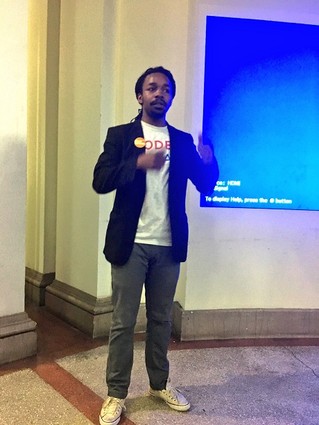
NJTechWeekly.com stopped by HackNewark, at Newark City Hall on March 26, to watch the demos developed by three groups of talented hackers.
Isaiah Little, program manager for the City of Newark’s Office of Information Technology and brigade captain for Code for Newark, led the full-day event with some volunteers. He noted that this was the first-ever hackathon to take place at Newark City Hall, and added that HackNewark had attracted some new coders who were participating in their first hackathon experience.
Newark Thrives!
This year’s HackNewark supported Newark Thrives!, a nonprofit that wants to make high-quality after-school and summer activities accessible to young people. According to Dr. Traymanesha Moore, Newark Thrives! executive director, “We are trying to get information from all of the providers of out-of-school activities, and make sure the information is disseminated to people in the community, whether it’s families or students.”
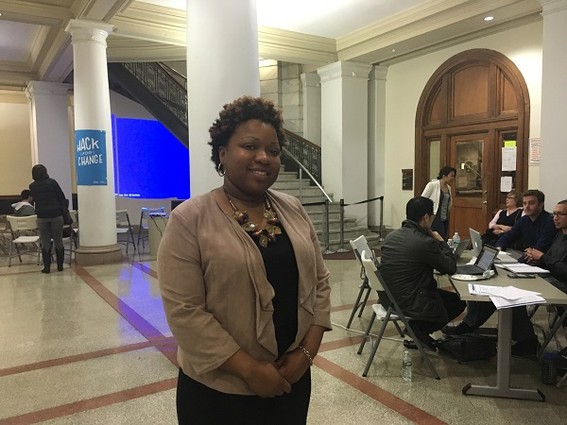
After all, kids who are busy in after-school and summer activities have stimulation, often acquire skills that prepare them for college and life and avoid being at loose ends. But teens can’t go to basketball games, mentoring programs, coding classes or art lessons if they don’t know they exist.
“We want it to be easier for a student who is living in the West Ward, for example, to be able to input that information into a program, along with their age, and see what services exist,” said Moore. The ability to develop a program locater is “crucial and critical” for providing access and opportunities for kids, she added.
Moore explained that a data evaluation specialist, Josephine Russo, developed a survey and collected information about programs for Newark Thrives! She then gave this data to the City of Newark’s Office of Information Technology. The city government gave the HackNewark participants access to that information to use for the hackathon. The program locator is expected to be a small piece of the larger Newark Thrives! website.
Judging the hackathon were Tyler Bird, community development consultant at CartoDB ; Anthony Frasier, cofounder at The Phat Startup and Brick City Tech Meetup; William Simpson, operations manager of My Brother’s Keeper Newark; and Little.
Team “Brick’d’s” Mobile-First Concept
The first group that presented, “Team Brick’d,” created a mobile-first app, since most teens are often on their mobile phones and would find such an app more convenient. By giving youths, their parents and friends access to resources, the coders hoped to increase participation in activities that develop a sense of community, according to a spokesman for the group. The app was called “Let’s Do That,” and it incorporated GPS technology.
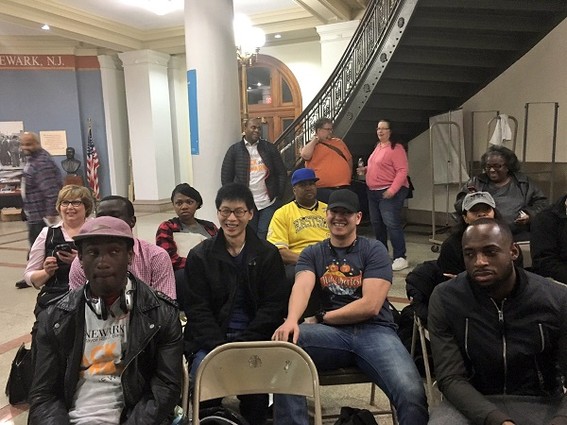
When a user opens the app, it shows nearby events. The user can also search for specific events. “Say you are looking for something after school, the app will tell you some of the nearby programs that may be of interest to you.”
The group wanted to make the app social, so users log on with Facebook to “build that connection with community,” the presenters said. “People can comment on events and ask their friends if they are also attending,” try to get a group together to attend a particular class or ask each other about locations and directions.
“Art Of Code Crew” Team Addresses Data Issues
Up next was the “Art of Code Crew” team, which addressed the administrative needs of Newark Thrives! “When we took on this challenge, we found that the data is what is known as ‘dirty,’” a presenter noted. That doesn’t mean that the data is horrible or that the numbers are bad, but it does mean that the formatting and data entry aren’t consistent, he continued. “This makes it difficult to work with when programs expect the data in a certain format,” another presenter added.
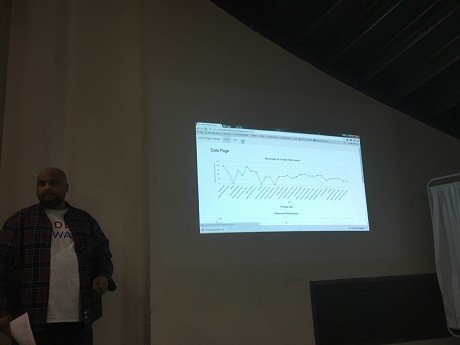
The team created an app that brings clarity to dirty data. As a presenter explained, “We wanted to create a color-coded portal for the administrators to access that data. We made a project tracker that has data visualization for Newark Thrives!
“Using data provided by Newark Thrives! we used Angular JS for our front-end technology and for our backend we used Python to style the information and make it more presentable than an Excel file. We deployed it to an app that is searchable.”
The team was able to take the information from Newark Thrives; put it into a database; and use graphs to show budget fluctuations for each after-school program, as well as fluctuations in the participation in each program.
“In this brief period of time, we weren’t able to do a deep dive into the data, nor did we cleanse everything. We chose a few representative pieces,” and worked with that, one of the coders said.
“No Talent Hack” Team Wins The Day
Last up was the team called “No Talent Hack,” which presented the “Out of School Time” Web portal. Although this was their first hackathon, the team—Sammie Lebreault, Ivan Quan and Moises Cordero—won first prize for their innovative portal and for the best use of CartoDB, a location intelligence and visualization engine.
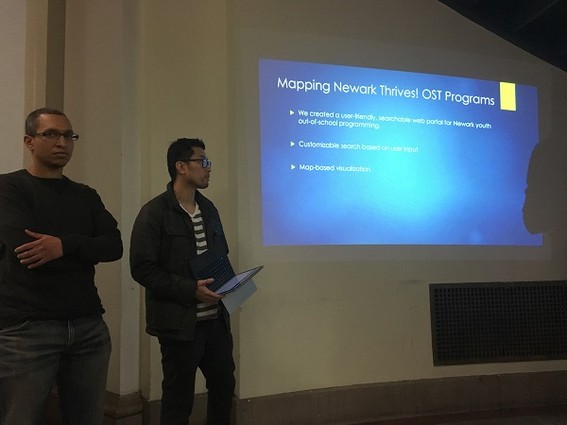
They approached the problem from an “ease of access” point of view, telling the group that they wanted to reduce the barriers for the children and families of Newark when it comes to getting information that would enable them to go to after-school programs or summer programs. “We created a user-friendly searchable web portal for Newark youth and a customizable search based on the user’s input. We also used map-based CartoDB for the visualizations.”
In the demoed project, users fill out a form. Based on the information that the user provides, the site will populate a map to show the nearest activities. One of the things the group wants to do in the future is create direct connections to local programs, so that a student can sign up via a program website or automatically send in information so that the program staff can contact the student and provide more information.
The coders showed how the site would work, entering data into the form using information from one of the team members, who pretended to be a parent looking for a basketball program for his son. After submitting the form, the map was populated with information, and the user could see how far basketball programs were from his home and then select one to attend. One feature that made a big impression on the audience was a visualization that showed the closest bus stops to programs and the user’s home.

